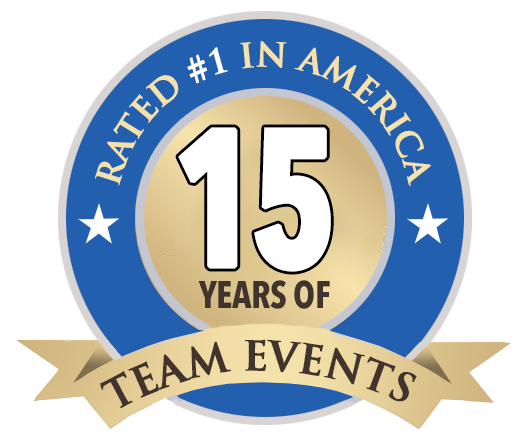The bad news is the state of corporate training in the U.S. today is abysmal. The good news is, this is fixable. And companies that do it well will reap multiple benefits.
First, the bad news. According to recent studies, six out of 10 employees say they’ve had no formal workplace training; they’ve had to learn the job on their own. Only a third of employees say they are “very satisfied” with their job-specific training, and less than 30% are very satisfied with their career advancement training and opportunities.
Yet more than 40% of workers say that training and advancement opportunities are very important factors in their job satisfaction; more than six in 10 say career training and development opportunities are important when evaluating a prospective new employer, and more than three-quarters say a company is more appealing if it offers skills training.
Poorly trained or untrained employees are less efficient and productive than their properly trained peers, and in certain roles, can even cause safety risks.
In a nutshell, most workers say their employers do a poor job of corporate training. Those employers will find it harder to retain employees, attract new talent, and get the most out of their current workforce.
Benefits of Improved Corporate Training
Beyond the statistics cited above, other research has found that:
- 34% of employees who left their previous job were motivated to do so by more career development opportunities.
- 68% of employees say training and development is the company’s most important policy.
- 70% of employees would be somewhat likely to leave their current job to work for an organization known for investing in employee development and learning.
- 93% of employees said that well-planned employee training programs positively affect their level of engagement.
And an astonishing 94% of employees say they will stay at a company longer if it invests in training and development.
Clearly, providing training opportunities is vital not only to retain your current workforce but also to attracting new employees.
Not only does training help you hang onto your smart and capable staff, but it also enhances engagement and improves their skills, making them more valuable and productive. Just as top-performing organizations make team building a regular event, they also weave training and development opportunities into the fabric of their operations.
Strive to Improve Inside and Out
Optimizing your organization’s performance requires a combination of external training workshops for skills development and internal training to expand job-specific knowledge.
One challenge faced by internal trainers is that they often aren’t taught how to be instructors. It’s frequently simply a matter of seniority: Bill has been running the warehouse for years, so he can train anyone in on any function there, while Sheila has worked her way up through the finance department to a leadership role, so she can teach new accounting professionals all they need to know.
While that approach is certainly better than counting on new employees to figure things out for themselves, it’s not a lot better. It’s just as important for Bill, or Sheila, or any experienced employee to understand how to teach as to know what to teach.
The statistics cited above make it clear that employees value training and want to be trained effectively. But too often, the subject matter experts—the Bills and Sheilas of the world—while smart and well-intended, lack the communication skills, or the knowledge of how to be engaging and how to structure the information they’re presenting, to maximize comprehension and retention.
Challenges Faced by Internal Corporate Trainers
Individuals who conduct training workshops, facilitate team building events, or deliver keynote presentations are professional communicators. They impart knowledge for a living.
But your internal subject matter experts, often tasked with training new team members, are experts in their respective fields: accounting, customer service, IT, HR, engineering, design, or whatever function it may be. They are, generally, not trained speakers or educators. Four specific areas that present challenges are:
Generational differences: Your senior staff members may be Millennials, but are more likely Gen Xers or even Boomers. Regardless, any of these individuals can potentially be called upon, at different times, to train and mentor members of these generations or Gen Z workers.
“A skilled trainer has to be able to work well with all of the current generations. No matter what age they are, they must be able to speak to them where they are coming from, to impart knowledge effectively,” says Tom Leu, MS/CPC, who delivers a keynote titled My Generation. “Having trainers or instructors who are also skilled communicators who know how to teach people from multiple generations is not only ‘nice to have,’ but more necessary than ever.”
New technology: Experienced professionals know how to use current technology within their roles, of course, but may not grasp the way that different generations think about and view their devices and software.
For Boomers and GenXers, learning to navigate the web and their smartphones is something they’ve done as adults, or at least as teens. Members of Gen Z on the other hand, and most Millennials, haven’t lived in a world without these things. They have no memory of a time before these existed.
It’s important to understand these perspectives when training younger (or older) employees. GenZ office workers know where the “Save” button is in Microsoft Word, but many have no idea that the icon represents a diskette—because they’ve never used one.
Learning styles: Some people are auditory learners (they understand and retain information best by hearing it), while others are more visual or kinesthetic (hands-on).
Corporate subject matter experts who aren’t trained as trainers tend to teach in the style they learn best. But different styles, or a mix of different mediums, may work best for the employees receiving the training.
What’s in it for me (WIIFM): To maximize understanding and knowledge retention, it’s vital for professional teachers to communicate to their students why some particular information is important, and why it matters to them. Professional teachers, trainers, and instructors know how to communicate the WIIFM to their students. Corporate subject matter experts may understand this but often haven’t been taught the skills or tools to impart that knowledge.
The Solution: Train the Trainers
Fortunately, there are a variety of professional development workshops and programs that can help anyone in your organization become a better communicator, and therefore a better trainer. Anyone involved in delivering formal or informal, on-the-job training can benefit from these activities.
One helpful approach is to go through a personality assessment workshop, which helps trainers better understand their own traits and recognize how to more effectively communicate with colleagues. Three valuable programs are:
DiSC Profile Workshop: This workshop helps participants learn how their own behavioral and communication styles correspond to others, and how the management of those styles can significantly impact the overall success of the group. It teaches individuals to identify and appreciate the traits of their peers and replace poor habits with empowering strategies for communicating.
Emotional Intelligence Training: Emotional Intelligence (E.I.) is the ability to understand and effectively apply the power of our wide range of emotions in positive, productive ways. This training helps employees better understand how to manage their emotions, take responsibility to contribute, and use this knowledge to communicate more effectively.
Myers-Briggs Type Indicator (MBTI) Training: The MBTI training workshop will increase awareness of your team’s relationships by identifying the types of personalities that make up your group and demonstrate how awareness of personality styles can translate into positive behavior. It explains thinking, organization, and decision-making associated with each personality style, and demonstrates how knowledge of learning and communication preferences can affect others.
Beyond these workshops, your internal trainers can learn more effective one-on-one communication skills in our Manager’s Guide to Business Coaching program and group communication practices through our Presentation Skills Training.
Finally, as a follow-up to his keynote talks, Tom Leu can deliver a half-day in-person training program reinforced by one-hour to half-day monthly virtual sessions on strategic communication skills.
Summary
Employees place a high value on training, both in terms of evaluating prospective employers and remaining loyal to and engaged with their current company. Skills training is vital for enabling employees to increase their productivity and be prepared to grow in their careers.
Yet as important as training is, far too often, organizations fail to do a good job with it. Only a third of workers say they are highly satisfied with their internal training, while nearly six out of 10 say they received virtually no training; they were just thrown into a role and forced to figure things out on their own.
Even when businesses do make training a priority, the subject matter experts doing the training may not be optimally effective. They know the information and the role but frequently have never been taught communication or instructional skills.
Fortunately, there are a variety of professional development workshops and programs available through Best Corporate Events that can help internal trainers better understand the role that emotions, personality traits, learning styles, and generational differences can play in training and learning. By becoming more effective trainers, they can help their organizations improve retention, recruitment, and overall business performance.









